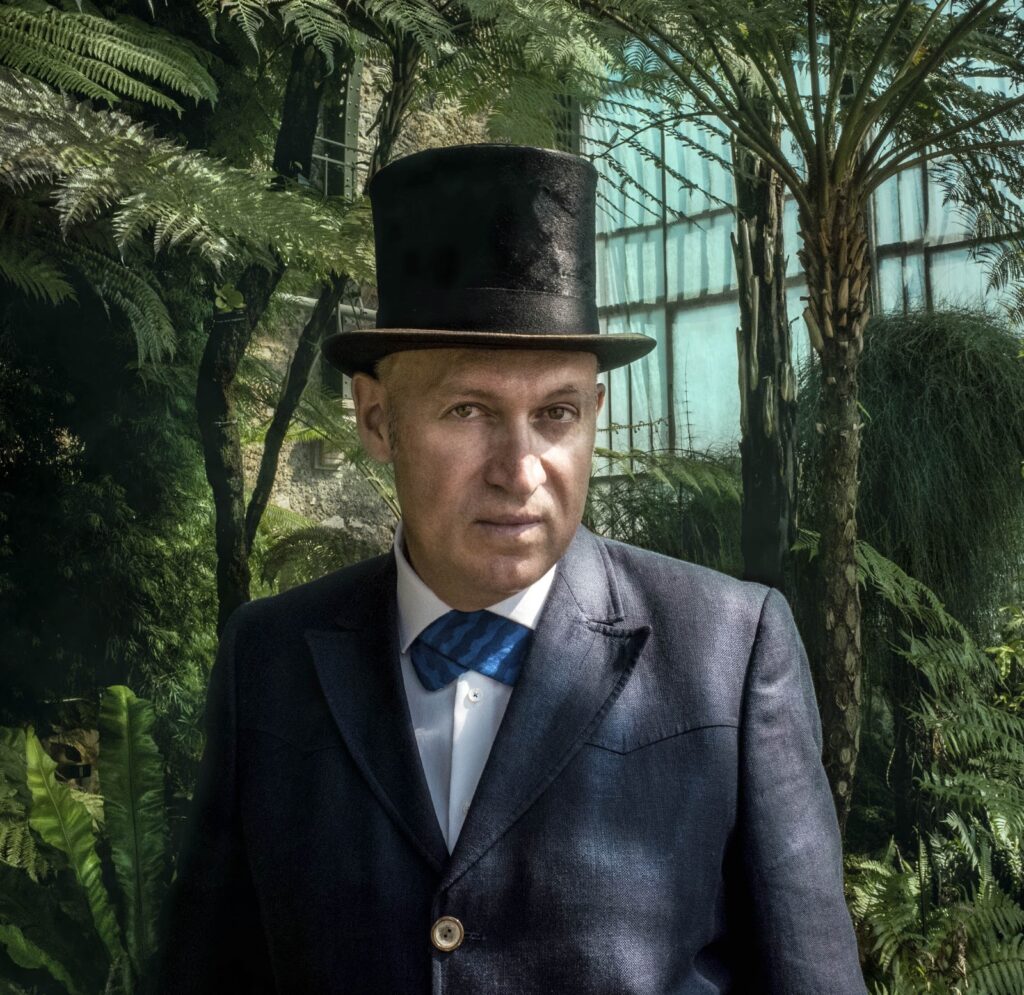Mo Laudi says the video to Afro Bolero was made to relay a medley of the research and discussions that informed the making of the track. (Jo Zhou)
It was eight years ago in Berlin that I met Philippe Cohen Solal, the maestro of Gotan Project. We were both booked to perform at a club called Gretchen in Berlin. I loved what he did with introducing tango to a new audience. There was a time when I lived in London where all the cool gastro pubs would be playing Gotan Project — Buddah Bar, Hôtel Costes, Café del Mar. He was that dude. After the show we spoke of rumba vs rhumba, champeta and how tango was born from African slaves in Argentina who were disregarded. Then, decades later, it’s all the rage of “high society” in Europe.
We met again in Paris; spoke of collaborations and breaking genres. At the time the texture of his sound in his DJ sets was more Latin electronica, but you could hear the curiosity and his vast music-programmer knowledge. We wanted to make a track that breaks borders — connects Africa to South America and Europe. I came to him with a Afro-house-vibe drum pattern I had programmed. We sampled a Barack Obama speech, Frelimo and Angolan freedom fighters, and played about for hours and hours in the studio. Solal then had the key ingredient: a sample of Ravel.
But rather than use the actual sample — and this is what Solal is a genius at — he created his own version. Remember that he discovered Keziah Jones and Zazie, and produced Salif Keïta, among others.
Then he invited a sacred cocktail: Flamme Kapaya, the outstanding Congolese guitarist; our homie the Parisian DJ-beatmaker Lazy Flow; and the late Hilaire Penda, a Cameroonian bass player who has unfortunately left us since. The track took on another life, became more live, and then, the cherry on top: the queen, United Nations ambassador Angélique Kidjo, added her incredible vocal tones.
 Philippe Cohen Solal of the Gotan Project (Joseph Colban)
Philippe Cohen Solal of the Gotan Project (Joseph Colban)
Initially I was hesitant to do a rap on the Afro Bolero beat because I was actively striving to be taken seriously as a producer. I thought the track could live as it was with minimum vocals, but I also wanted it to be performative, so an improvised rap I did came into the mix after all. I rap in English and in Sepedi, calling for change.
I wanted to invent a new dance style but, at the same time, one that anticipated the TikTok app or internet challenges. I was inspired by how in South Africa every year there is a new dance style, and the dance movements go on to inspire the world, such as the DJ Bongz and the pantsula dancers in Beyoncé’s video.
I wanted to create this new pan-African dance move. I wanted to connect the Black Atlantic, the diaspora. I called upon the spirit of my ancestors, my heroes, like freedom fighters Patrice Lumumba and Steve Biko. There is a scene in Cry Freedom when you see Biko dance; I love that.
We should dance to remember our histories: dance to let go, dance to connect, dance to break class, racial and sexual barriers. I believe in globalisto, the spirit of a borderless world. I believe we have captured that in this track. I wanted this video to relay a medley of the research and discussions that informed the making of our track.
Kidjo chose to sing Bella Bellow’s Blewu to shine the light on fallen African soldiers of World War I, who are still mostly forgotten because of racism. This dignified performance is juxtaposed against footage of the Ku Klux Klan and the blackface minstrel shows that occurred when Black people were not allowed to be seen on TV.
 Angélique Kidjo singing in a still from Afro Bolero, a collaboration featuring Phillipe Cohen Solal, Angelique Kijdo and Mo Laudi
Angélique Kidjo singing in a still from Afro Bolero, a collaboration featuring Phillipe Cohen Solal, Angelique Kijdo and Mo Laudi
Although there are these complex power struggles of imagery and political ideology, there are kids doing moves such as the gwara gwara, the shaku shaku, the bouncing cat, the vosho, shangaan and zaouli, inspired by South Africa, Nigeria, Côte D’Ivoire and Ghana. Voguing originated in the Black American gay club scene and now also entered a lexicon of the expression of nonbinary identities.
The video also references Sarah Baartman, who was known as the Hottentot Venus, stolen from South Africa and sent to Europe to be exhibited, victimised and ridiculed for the size of her buttocks until her death. Now in pop culture, twerking is celebrated as an expression of sexual agency. As the owner of a theatre company, the radical performer Ida Rubinstein commissioned Maurice Ravel for the Boléro in the 1920s. The video evokes feminist activism through the ages: Harriet Tubman; Winnie Mandela; Miriam Makeba; Angela Davis; the first lady of rock n roll, Sister Rosetta Tharpe; and Marielle Franco, who was killed by the police in Brazil.
The Afro Bolero EP includes remixes by Poté; German electronica maestro Daniel Haaksman; and South African avant-gardist Spoek Mathambo’s group Batuk.